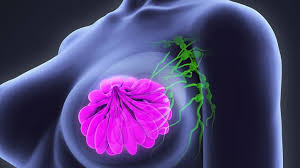There are other warning signs and symptoms of breast cancer which are easily detectable – if you know what to look for. If you notice one or more of these or anything out of the ordinary, you should schedule an appointment soon as possible with your doctor. Other common signs and symptoms of breast cancer include:
- Warm, red, irritated and/or itchy breasts. These are among the most common early warning signs of inflammatory breast cancer.
- Nipple discharge. With the exception of breast milk that may leak from breasts during or after pregnancy, any nipple discharge should be checked by a doctor. Clear or bloody discharge may indicate cancer.
- Flat or inverted nipple. If this is unusual for you, have it evaluated by a doctor.
- Scaliness. Healthy breast skin is smooth. If yours is scaly or inflamed, that's a red flag.
- Changes in skin texture. If you develop a rash, puckering or dimpling on the breast, that could be a sign of breast cancer. Skin changes related to breast cancer may resemble the rough skin of an orange peel.
- Change in breast size or shape. While it's not uncommon for someone to have one breast that's larger than the other, any new change in breast size or shape -- especially in just one breast -- could indicate cancer.
- Lump or swelling around breast, collarbone, or armpit. Swelling or lumps in the areas surrounding your breasts can be caused by breast cancer that has spread to lymph nodes. This may be seen before you can feel a lump in your breast.
What's Normal?
Knowing the breast cancer red flags to watch for is important, but so is knowing about breast changes that may be completely normal. Throughout a woman's menstrual cycle, periodic breast pain, tenderness, and heaviness are common. If you experience these feelings in both breasts and are menstruating or about to begin your cycle, these symptoms are most likely the result of normal, monthly hormonal changes in your body.When to Get Checked for Breast Cancer
If you're experiencing any of the symptoms mentioned above, or if you're having pain at times other than the start of your menstrual cycle, it would be a good idea to talk to your doctor about getting a mammogram. Schedule an appointment with your gynecologist, who will typically examine you and then refer you for a mammogram. The American Cancer Society advises women ages 40 to 44 should have the choice to start annual breast cancer screening with mammograms if they wish to do so. Women age 45 to 54 should get mammograms every year. Women 55 and older should switch to mammograms every 2 years or can continue yearly screening.Mammograms effectively detect 84% of breast cancers; so when you're given a clean bill of health you can set your mind at ease. If your mammogram detects a suspicious mass, you can be evaluated further. If you do have breast cancer, you can expect a better outcome, because the earlier cancer treatment begins, the better the patient outcomes usually are.

No comments:
Post a Comment